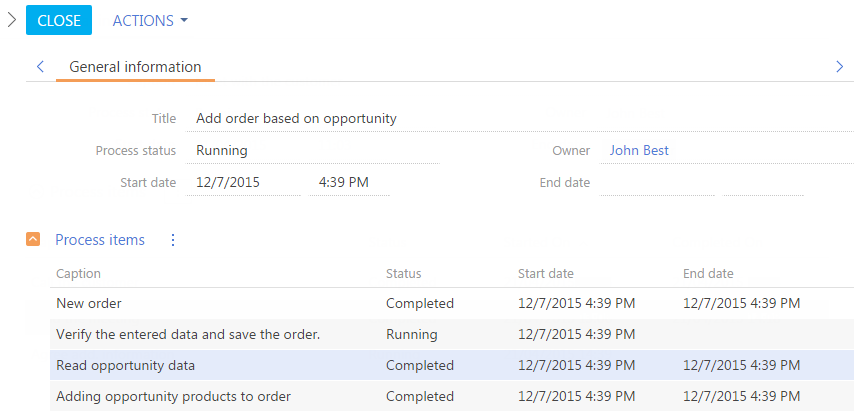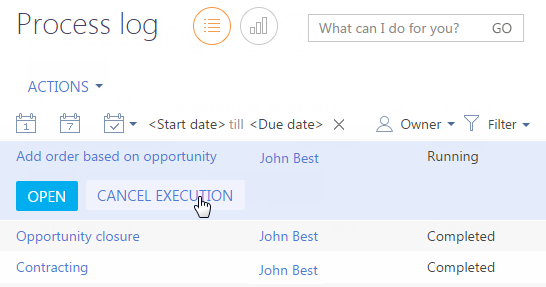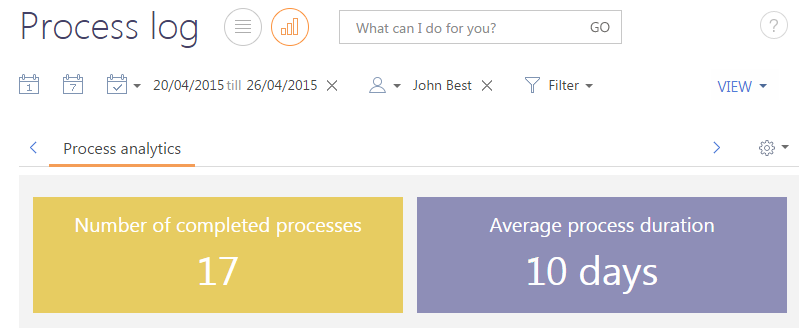
Regular process execution monitoring allows you to analyze the employee's productivity on the one hand, and on the other hand — to track "bottlenecks" in the designed diagrams for their further optimization.
Contents
•How to view the process execution history
•How to cancel process execution
•How to view process statistics
How to view the process execution history
Once a business process is initiated, information about the process instance is saved in the [Process log] section. In particular, the log record page contains the name of the employee who initiated the process, the status of the process instance (“Running” or “Completed”), and a list of the activated process steps (Fig. 102).
Fig. 102 Viewing the process execution history

How to cancel process execution
If a process was started mistakenly or if there is any other reason to stop the further execution of a process, you can cancel that process.
You can cancel processes using the [Process log] section. To do this, select a required process instance in the list and click the [Cancel execution] button (Fig. 103).
Fig. 103 Canceling a process execution

How to view process statistics
Use the analytics view of the [Process log] section to analyze statistics that were collected and calculated during process execution.
For example, you can analyze the number and duration of processes and their items using pre-configured indicators and diagrams (Fig. 104). If you need to customize the source data of the statistics, just use standard filters in the section.
Fig. 104 Example of statistics about processes

Note
Working with analytics, analytics setup and standard filters are described in the documentation of the bpm'online application.
See also